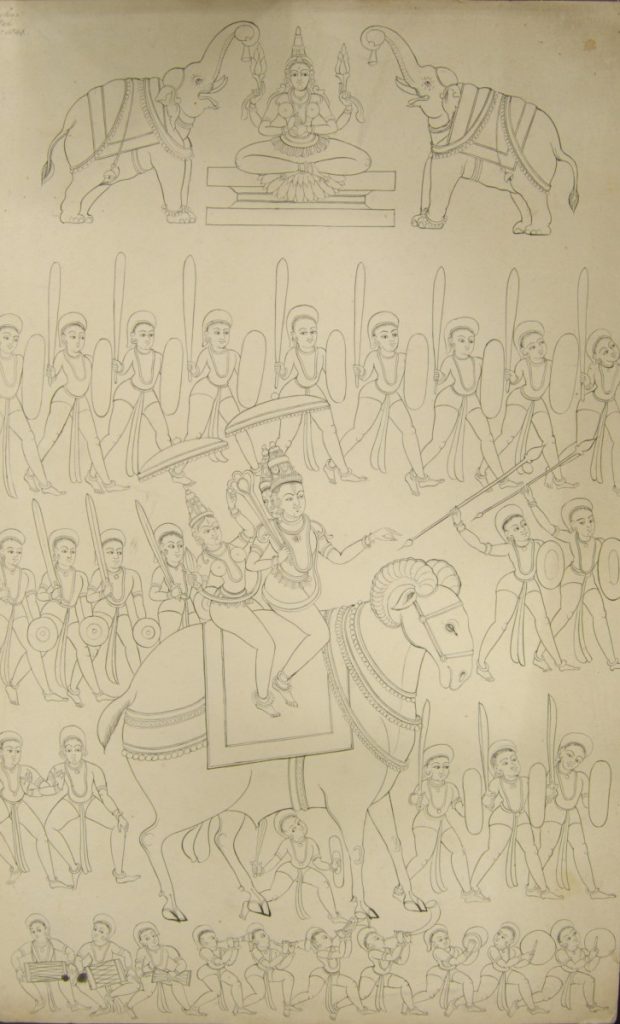A Cartographic “Guide for Strangers in Madras”
This week’s blog is written by Philip Jagessar who provides an update on one of the earliest maps that the Society acquired which features a detailed town plan of Madras.
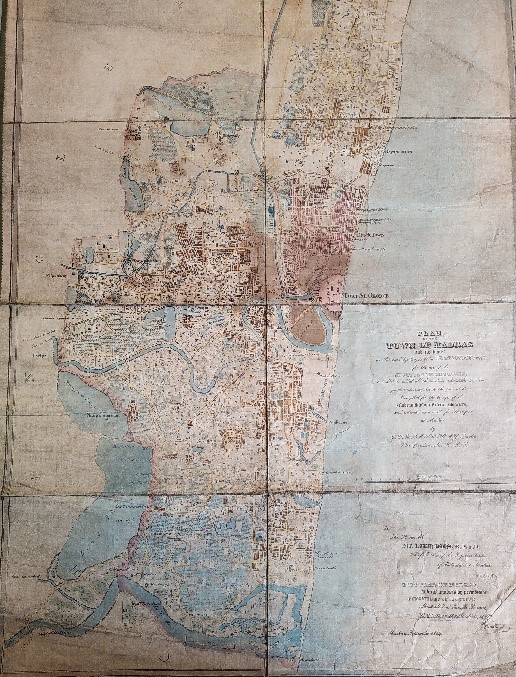
Many of the earliest maps acquired by the Royal Asiatic Society were, unsurprisingly, of India. Among them was a Plan of the Town of Madras and its limits, published in 1834, showing the layout of the East India Company town which grew out of one of its earliest settlements in southern India at Fort St George.
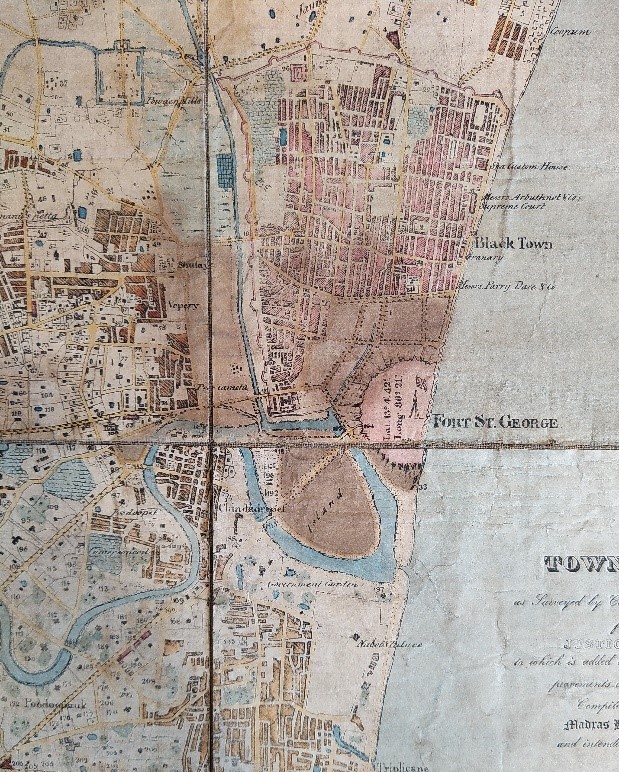
What makes this town plan of Madras intriguing is that the map had been created to serve one function and subsequently repurposed into an early ‘tourist’ map of the settlement. The map description informs the user that the town plan was made from a survey of Madras by a certain Captain William Ravenshaw “for the use of the” Justices in Sessions. It would appear the town plan served a functional role in the day-to-day operations of Madras’ Supreme Court which had been established in 1800. This map could have been created to help the Justices locate and situate where in Madras a particular legal issue or dispute had occurred, or whether it fell under their jurisdiction. Although faded, the map clearly shows details such as cadastral parcels which would have been important in property disputes.
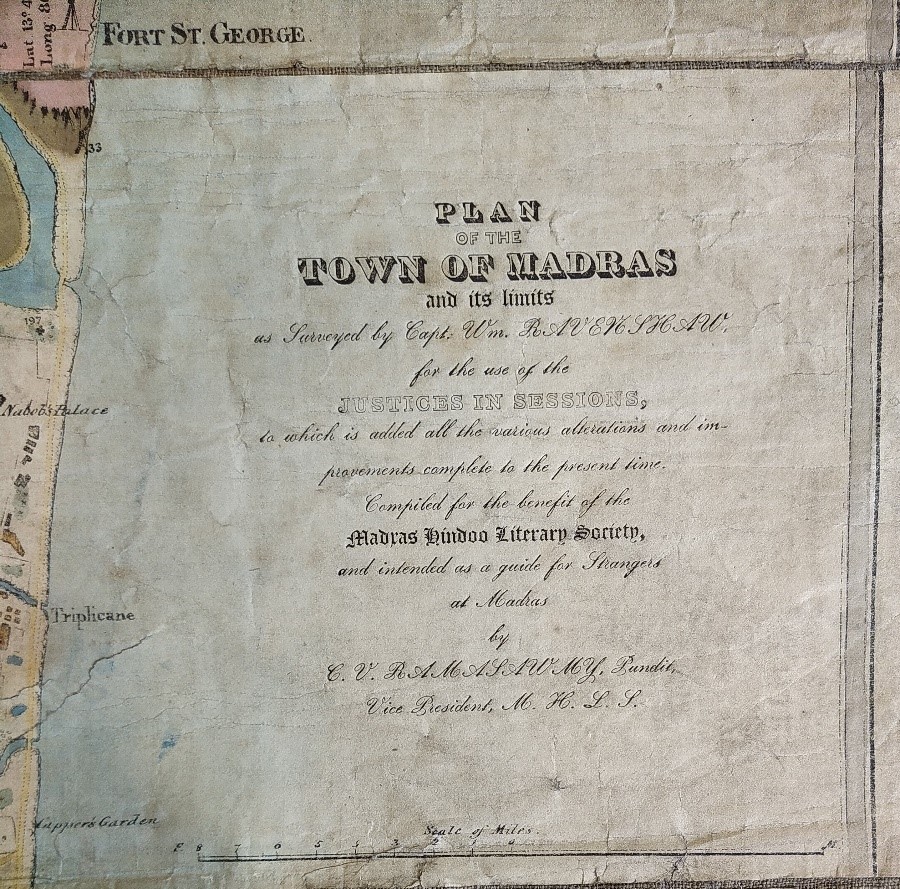
However, the description also explains to the user that the map has been “compiled for the benefit of the Madras Hindoo Literary Society, and intended as a guide for strangers at Madras” by the Society’s Vice-President, C. V. Ramaswamy. Ramaswamy was one of the three Cavelly (Kavali) brothers who famously collaborated with Colin Mackenzie on his surveys of southern India in the early 19th century. Another brother had set up the Madras Hindu Literary Society, with Ramaswamy as Vice-President, to coexist with the British dominated Madras Literary Society (established in 1817). Ramaswamy and his brother were among the earliest Indian members of the Madras Literary Society, which had been set up by members of the East India Company as an affiliate of the Asiatic Society in Bengal and subsequently also established a relationship with the Royal Asiatic Society in London.
The Madras Hindu Literary Society conceivably compiled and published the map to help esteemed visitors from other societies across India and Europe make sense of the geography of Madras and find their way around town. The Plan of the Town of Madras was possibly gifted by the Hindu Literary Society to the RAS for such a purpose. Perhaps, however, the map found its way into the collection through a member of the RAS who may have once been a “stranger at Madras”.
Philip Jagessar
Upcoming events:
Bayly Prize Ceremony:
Please join us at 6:30pm on Thursday November 11th for three Zoom presentations from the finalists of this year’s Bayly Prize.
- Mallika Leuzinger on Dwelling in Photography: Intimacy, Amateurism and the Camera in South Asia
- Stefano Gandolfo on The Streams of Knowledge: Organising the Siku quanshu 四庫全書
- Shreyashi Dasgupta on The Accommodation City: Private Low-Income Housing and Urban Space in Dhaka and Mumbai
This will be followed by a presentation to this year’s Bayly Prize winner, Mallika Leuzinger.
To register, please email Matty Bradley at mb@royalasiaticsociety.org. Please note that this event is virtual only.
Dr Lesley S Pullen Lecture:
Please join us at 6:30 pm on Tuesday November 16th for a hybrid lecture given by Dr Lesley S Pullen entitled ‘Patterned Splendour: Textiles depicted on Javanese sculpture 8th to 15th century’.
The lecture examines Hindu Buddhist sculptures that were produced in Java between the eighth and the fifteenth century which feature detailed textile patterns. Illustrated with maps, photos and drawings, this lecture unfolds many of the complex patterns revealed on these sculptures and explores possible places of origin, from Indo-Persian to China, or indeed indigenous to Java.
Lesley Pullen is an art historian focusing on medieval South and Southeast Asian material cultures. Completing her PhD in 2017 at SOAS University of London, she was subsequently appointed a SOAS Post-Doctoral Research Associate. She is currently a member of the Editorial Board of the SPAFA Journal in Bangkok and a Fellow of the Royal Asiatic Society.
If you wish to attend, please register by email with Matty Bradley at mb@royalasiaticsociety.org. Please also don’t forget to state your preference for attending in-person or virtually. We look forward to seeing many of you there!
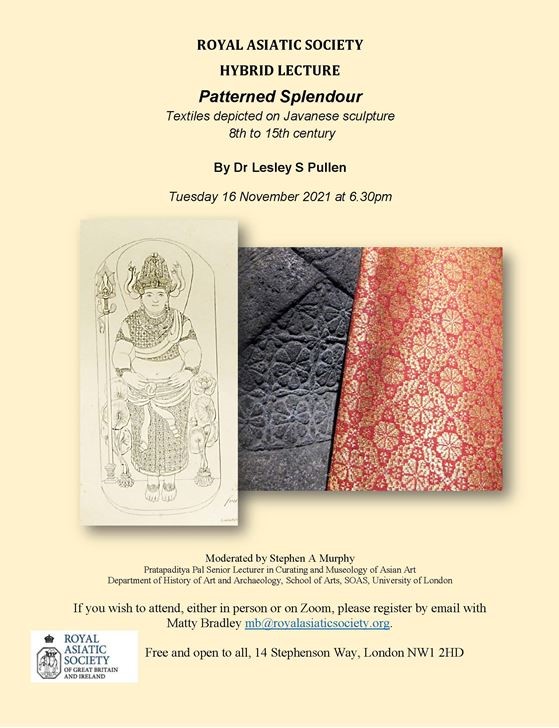
SOAS student visit:
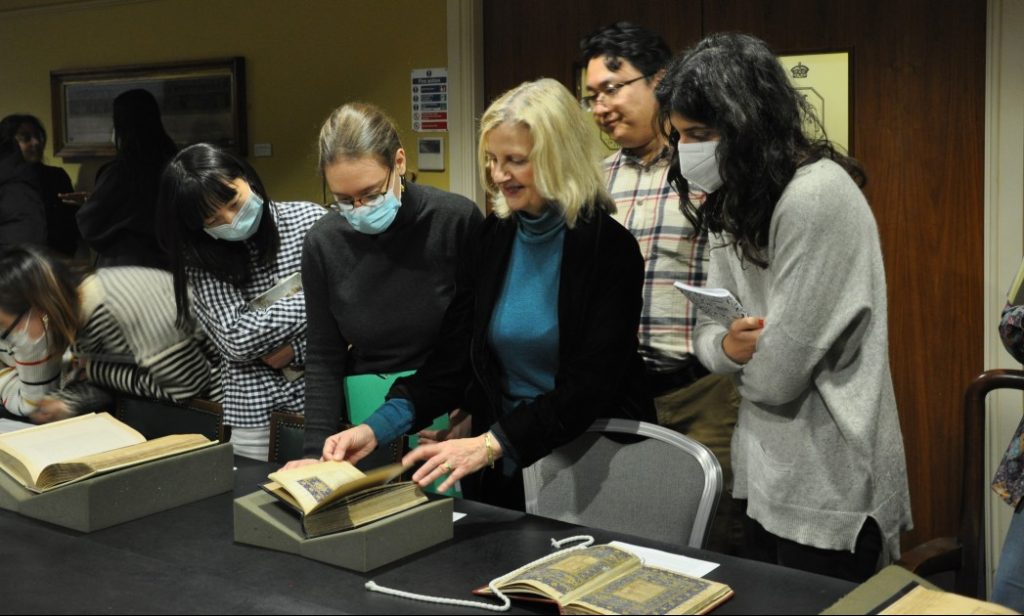
Yesterday afternoon (4th November), the Society welcomed Professor Anna Contadini and MA students from the History of Islamic Art course at SOAS. Following an introduction from the Society’s Director, the students explored Islamic art within Persian manuscripts and through other collections that were on display. We hope to arrange more opportunities for students to come and visit the Society’s collections in the coming months!
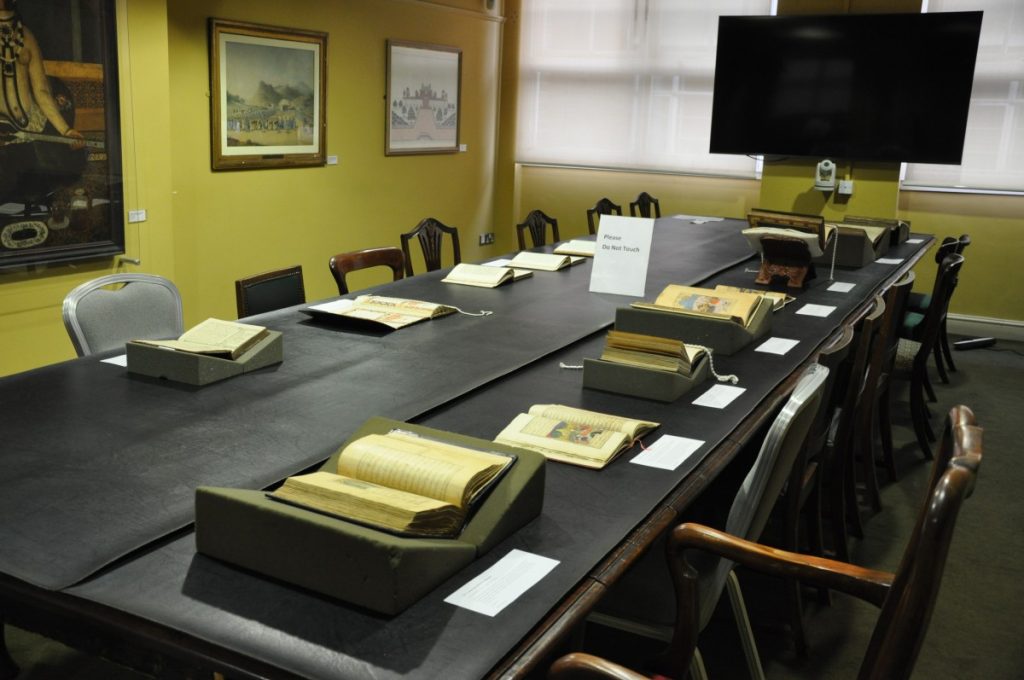
Diwali wishes
The Society would like to wish a happy Diwali to all of those who are celebrating. When having a look at the Society’s collection of paintings and drawings, I came across a drawing featuring Lakshmi, who is known as the goddess of wealth and prosperity. On the third day of Diwali (known to many as Lakshmi Pujan) rituals are dedicated to Lakshmi to welcome her into their cleaned homes and to bring prosperity and happiness for the coming year.
